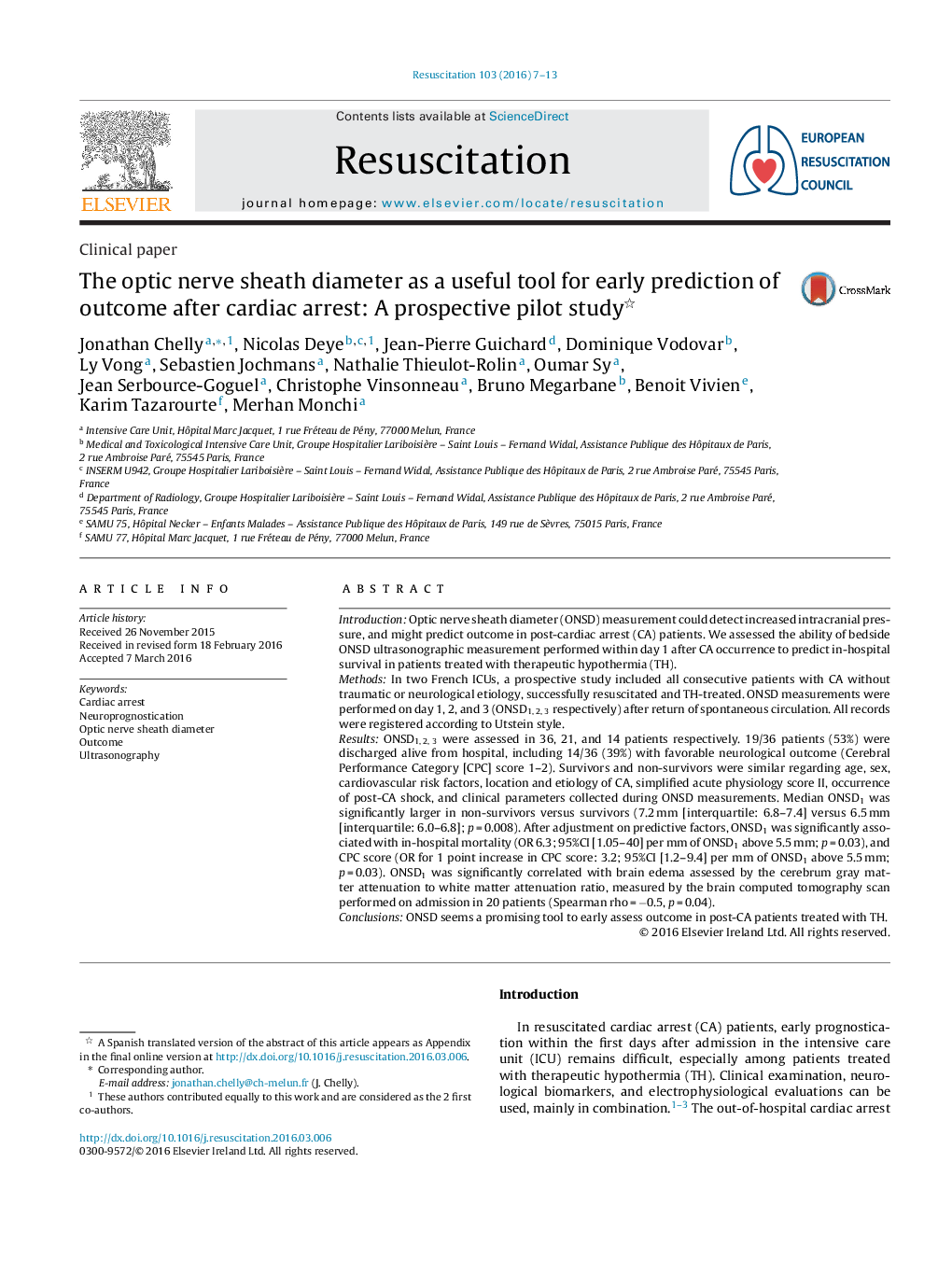| Article ID | Journal | Published Year | Pages | File Type |
|---|---|---|---|---|
| 5997052 | Resuscitation | 2016 | 7 Pages |
IntroductionOptic nerve sheath diameter (ONSD) measurement could detect increased intracranial pressure, and might predict outcome in post-cardiac arrest (CA) patients. We assessed the ability of bedside ONSD ultrasonographic measurement performed within day 1 after CA occurrence to predict in-hospital survival in patients treated with therapeutic hypothermia (TH).MethodsIn two French ICUs, a prospective study included all consecutive patients with CA without traumatic or neurological etiology, successfully resuscitated and TH-treated. ONSD measurements were performed on day 1, 2, and 3 (ONSD1, 2, 3 respectively) after return of spontaneous circulation. All records were registered according to Utstein style.ResultsONSD1, 2, 3 were assessed in 36, 21, and 14 patients respectively. 19/36 patients (53%) were discharged alive from hospital, including 14/36 (39%) with favorable neurological outcome (Cerebral Performance Category [CPC] score 1-2). Survivors and non-survivors were similar regarding age, sex, cardiovascular risk factors, location and etiology of CA, simplified acute physiology score II, occurrence of post-CA shock, and clinical parameters collected during ONSD measurements. Median ONSD1 was significantly larger in non-survivors versus survivors (7.2 mm [interquartile: 6.8-7.4] versus 6.5 mm [interquartile: 6.0-6.8]; p = 0.008). After adjustment on predictive factors, ONSD1 was significantly associated with in-hospital mortality (OR 6.3; 95%CI [1.05-40] per mm of ONSD1 above 5.5 mm; p = 0.03), and CPC score (OR for 1 point increase in CPC score: 3.2; 95%CI [1.2-9.4] per mm of ONSD1 above 5.5 mm; p = 0.03). ONSD1 was significantly correlated with brain edema assessed by the cerebrum gray matter attenuation to white matter attenuation ratio, measured by the brain computed tomography scan performed on admission in 20 patients (Spearman rho = â0.5, p = 0.04).ConclusionsONSD seems a promising tool to early assess outcome in post-CA patients treated with TH.
